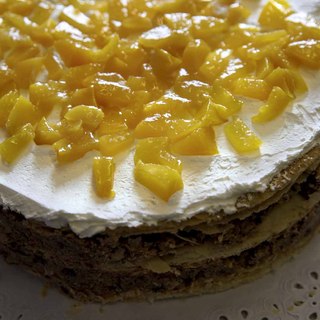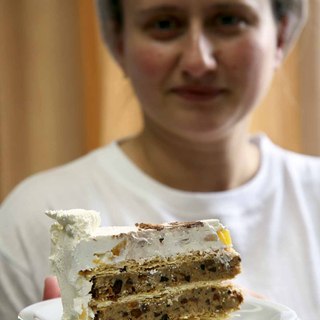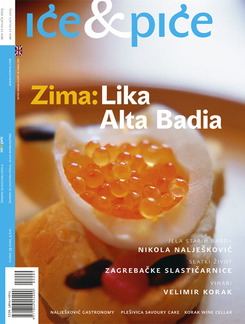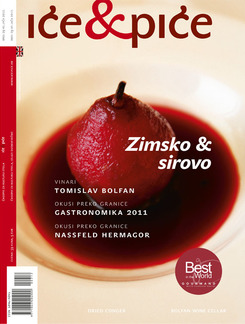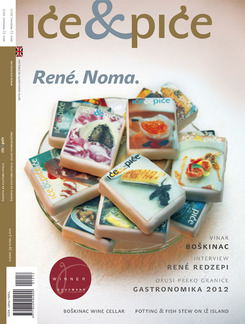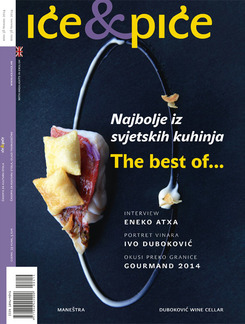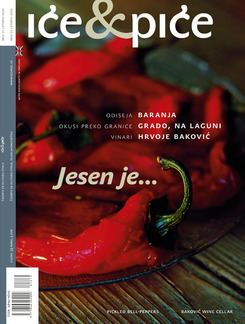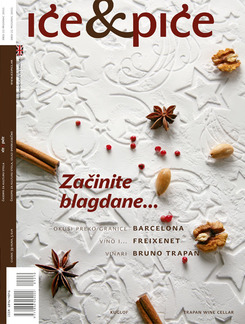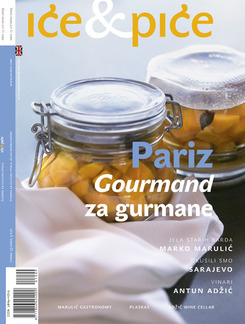In quest of the Croatian version of the Sacher cake, a group of enthusiasts gathered together in the early 1990s with the aim of finding an extraordinary and luxurious delicacy, which would help them move away from the sad reality of the war led at the time. Conversations about the origins of confections led them into the age of Baroque, when the first traces of the Frankopan cake could be discovered…
While preparing the Austrian Culture Week, ethnologist Nives Ritig-Beljak discovered in Zagreb an original recipe in the Granat-Apffel cook book, printed in Graz in 1686. The author is Eleonora Maria Rosalia, the princess of Eggenberg, though this fact is not explicitly stated in the first editions, as it was not customary for women to publish books at the time, but indications and reissues point to such a trace.
Eleonora Maria Rosalia was born in 1647 in what is today the Czech Republic as the princess of Lichtenstein. After marrying Johann Seyfried of Eggenberg, she came to regions around Postojna and Trieste, close to which the Furlan lineage of Frankopan (Frangipani) had their seat. A member of the family, Orfeo Frangipani, was a close friend of marquise Fran Krsto Frankopan, whose wife Julia de Naro he helped to escape to Venice after having found out about Fran’s arrest. It remains a mystery whether it was the aristocratic relations between respected European nobility families or the harrowing destiny of Zrinski-Frankopan gentry, brought to its end by the execution in Bečko Novo Mesto (Vienna Neustadt) in 1671, that urged the princess to name one of the cakes in her book the Frangipani cake.
Historical reconstruction of the cake
Granatapfel, German for pomegranate, is a luxurious gastronomic guideline manual written in Gothic lettering. It contains 519 recipes and medical advice for various illnesses. It was published in thirteen editions, and was after the death of the author signed by physician Georg Adam Seelig.
Similar to the majority of Baroque recipes, the one for the Frankopan cake is also incomplete, the ratios of ingredients are unknown, and some ingredients, like fat and lard for instance, are no longer used in making pastries and cakes. All this presented a challenge for professionals – how to renew a recipe so as too keep it as similar to the original as possible, but at the same time practical for cotemporary pastry cooks and housewives to prepare, and organoleptically competent enough to satisfy even the most demanding among gourmands. Ethnologist Ritig-Beljak looked for help from the head of Podravka’s food research and development centre, Ivanka Biluš, author of many books on cakes, who attempted a historical reconstruction of the cake. Taking into consideration the time at which the cake came to being, she assumed it was made of a special kind of short crust pastry, called kroštade or krostate, that are mentioned in the text and may be variations of buttery or puff pastry. Because groceries could not have been stored for a long period in Baroque, it was assumed that puff pastry was more likely used as it contained no eggs and was thus less perishable.
The filling consisted of at the time very popular frangipani filling made of almonds or pistachio, very similarly prepared as the confectioner’s filling with the abundant use of spices, either in order to hide the odour of aged groceries or, as in case of this cake, to achieve the pompous Baroque luxury that ordinary populace could not afford.
Gastronomic heritage
After having determined the historical presumptions about the original making of the cake, experts attempted to define the ratio of actual ingredients and to trace practical details about some combinations, varying from dough, buttery or puff pastry, with the filling either baked together with the pastry or spread over the already baked one. Ljubica Pilić, an economist but in her free time also a talented pastry cook, who subsequently joined the project, produced a creative first-run version of the cake that was eventually served for about three hundred guests on the occasion of the Austrian Culture Week opening ceremony.
Positive feedback and impressions reached also the tourist board of the city of Crikvenica, where the proposal was put forward to host this sweetmeat in memory of the Frankopans, the founders of contemporary Crikvenica. Mrs. Pilić handed down the secret recipe to pastry chefs of the Hotel International, still today the only place in Croatia where the cake can be tasted. Though the recipe is kept from the public, the biggest mystery most probably lies in the long experience of cheerful pastry chefs Antonija Balas and Martina Rebić.
And in order for this exceptional heritage to be saved from once again falling into oblivion, the Frankopan cake was included among 29 autochthonous dishes of the city of Crikvenica, on the initiative of the Crikvenica Gastro Committee. However, if you wish to participate in this sweet reconstruction yourself, we suggest the original recipe taken over from the Leipzig edition of Granat-Apffel from 1709.

